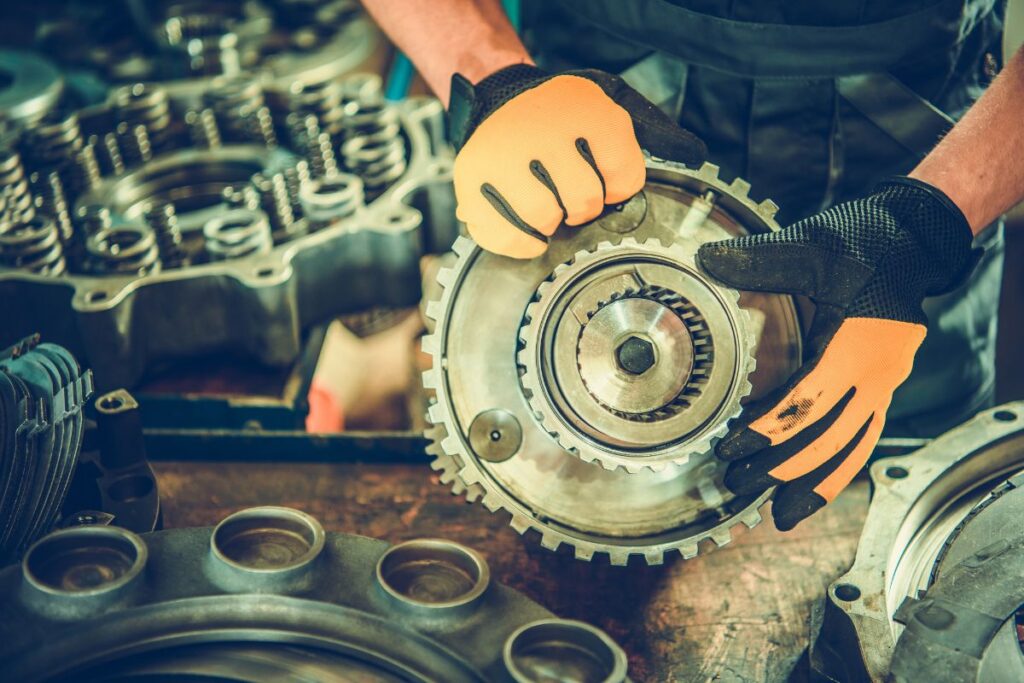John Deere Replacement Parts: Keeping Your Equipment in Top Condition

John Deere has long been a trusted name in farming and industrial equipment, known for its durability and efficiency. However, like any hardworking machine, even the best equipment will need repairs or maintenance over time.
That’s where John Deere replacement parts come into play. These parts keep your John Deere machines running smoothly, ensuring they stay reliable for years to come. Whether you’re repairing a tractor, combine, or lawn mower, finding the right parts is essential.
In this guide, we’ll cover why replacement parts are so important, the types available, their features and benefits, a comparison table, and installation and maintenance tips.
Why John Deere Replacement Parts Are Important
When your John Deere equipment needs repairs, using genuine replacement parts ensures the continued performance and longevity of the machine. Genuine parts are designed specifically for your equipment model, ensuring a proper fit and optimal function.
Using non-genuine parts or poorly matched replacements can lead to poor performance, higher fuel consumption, and, in the worst cases, further damage to your machinery.
Key Benefits of Genuine John Deere Parts:
- Longevity: Built to John Deere’s original specifications, ensuring a long service life.
- Performance: Maintains the high-performance standards John Deere equipment is known for.
- Warranty Protection: Genuine parts often come with warranty coverage, giving you peace of mind.
- Resale Value: Equipment maintained with genuine parts holds its value better over time.
Types of John Deere Replacement Parts
John Deere offers a wide variety of replacement parts, catering to different types of equipment. Here’s a breakdown of the most common categories of parts:
- Engine Parts
- These include filters, pistons, gaskets, and belts. Engine parts are essential for maintaining power and efficiency in your equipment.
- Transmission and Drivetrain Parts
- Transmission components like gears, axles, and clutches are critical for maintaining the tractor’s movement and stability.
- Hydraulic Parts
- Pumps, valves, and hoses ensure that the hydraulic systems in your machinery operate smoothly. Hydraulic systems power loaders, backhoes, and other attachments.
- Electrical Components
- This category includes starters, alternators, ignition switches, and wiring harnesses. These parts ensure your equipment starts reliably and powers other features.
- Filters (Oil, Air, Fuel)
- Regularly replacing filters keeps your engine running smoothly by removing contaminants from the air, fuel, and oil systems.
- Tires and Wheels
- Whether for tractors or mowers, John Deere offers durable replacement tires and rims that fit your equipment perfectly.
- Body and Cabin Parts
- Items like seats, control panels, and protective shields help maintain operator comfort and safety while using the equipment.
Features and Benefits of John Deere Parts
| Part Type | Key Features | Benefits |
| Engine Parts | Original fit, durable construction | Maintains engine performance and fuel efficiency |
| Transmission Parts | High torque resistance, precision engineering | Enhances driving performance, prevents wear and tear |
| Hydraulic Components | Heat-resistant, durable under pressure | Ensures smooth operation of attachments and systems |
| Electrical Components | High-quality insulation, durable wiring | Reliable starting and electrical system longevity |
| Filters | High filtration capacity, easy installation | Extends engine life by keeping contaminants out |
| Tires and Wheels | Heavy-duty rubber, deep treads | Long-lasting, reliable traction on various terrains |
| Body and Cabin Parts | Rust-resistant, weather-proof | Maintains comfort, safety, and aesthetics |
Popular John Deere Models and Their Parts
John Deere manufactures a variety of equipment, from tractors to mowers. Below are some popular models and the types of replacement parts they commonly need:
- John Deere 1025R Compact Utility Tractor: Frequently needs engine parts, filters, and hydraulic components.
- John Deere X350 Lawn Tractor: Typically requires regular filter replacements, tires, and electrical components.
- John Deere S780 Combine: Often needs replacement belts, hydraulic hoses, and cabin controls.
- John Deere 8R Series Tractors: May require transmission components, hydraulic systems, and electrical parts for complex operations.
Installation Guide: How to Install John Deere Replacement Parts
Installing replacement parts might seem intimidating, but following a few simple steps can make the process smoother. Here’s a general guide for replacing a John Deere engine air filter:
- Turn Off the Equipment
- Make sure the engine is off and cool before you start. Engage the parking brake for safety.
- Locate the Air Filter
- Consult your John Deere owner’s manual to locate the air filter housing, usually located near the engine.
- Remove the Old Filter
- Unclip or unscrew the air filter housing cover. Remove the old filter, being careful not to let debris fall into the air intake.
- Install the New Filter
- Insert the new filter, ensuring it fits snugly into place. Reattach the housing cover and secure it with clips or screws.
- Test the Equipment
- Start your John Deere equipment and check to make sure the air filter is properly installed, and the engine is running smoothly.
Maintenance Tips for John Deere Replacement Parts
Proper maintenance extends the life of your John Deere parts, preventing breakdowns and costly repairs. Follow these simple maintenance tips to keep your equipment in top shape:
- Change Filters Regularly
- Oil, air, and fuel filters should be replaced according to the manufacturer’s recommendations, usually after a set number of hours of use.
- Inspect Hydraulic Hoses
- Check for cracks, leaks, or signs of wear on hydraulic hoses. Replace them as needed to maintain efficient operation.
- Check Tire Pressure
- Ensure that your tractor or mower tires are properly inflated. Low tire pressure can lead to uneven wear and affect performance.
- Lubricate Moving Parts
- Grease the moving parts of your John Deere equipment, like pivot points, joints, and hinges, to prevent wear and friction.
- Use Genuine John Deere Parts
- Always opt for genuine parts to ensure the best fit, longevity, and performance for your machinery.
Conclusion
Whether you’re maintaining a small lawn tractor or a large agricultural machine, John Deere replacement parts are essential for keeping your equipment running efficiently. From filters and hydraulic components to transmission parts and tires, using genuine parts helps maintain performance, extend the life of your equipment, and protect your investment.
For more information or to purchase genuine John Deere parts, visit Green Farm Parts. They offer a wide selection of John Deere parts and provide expert guidance to help you find what you need.
Taking care of your equipment with proper parts and maintenance will ensure that your John Deere machine serves you well for years to come.
